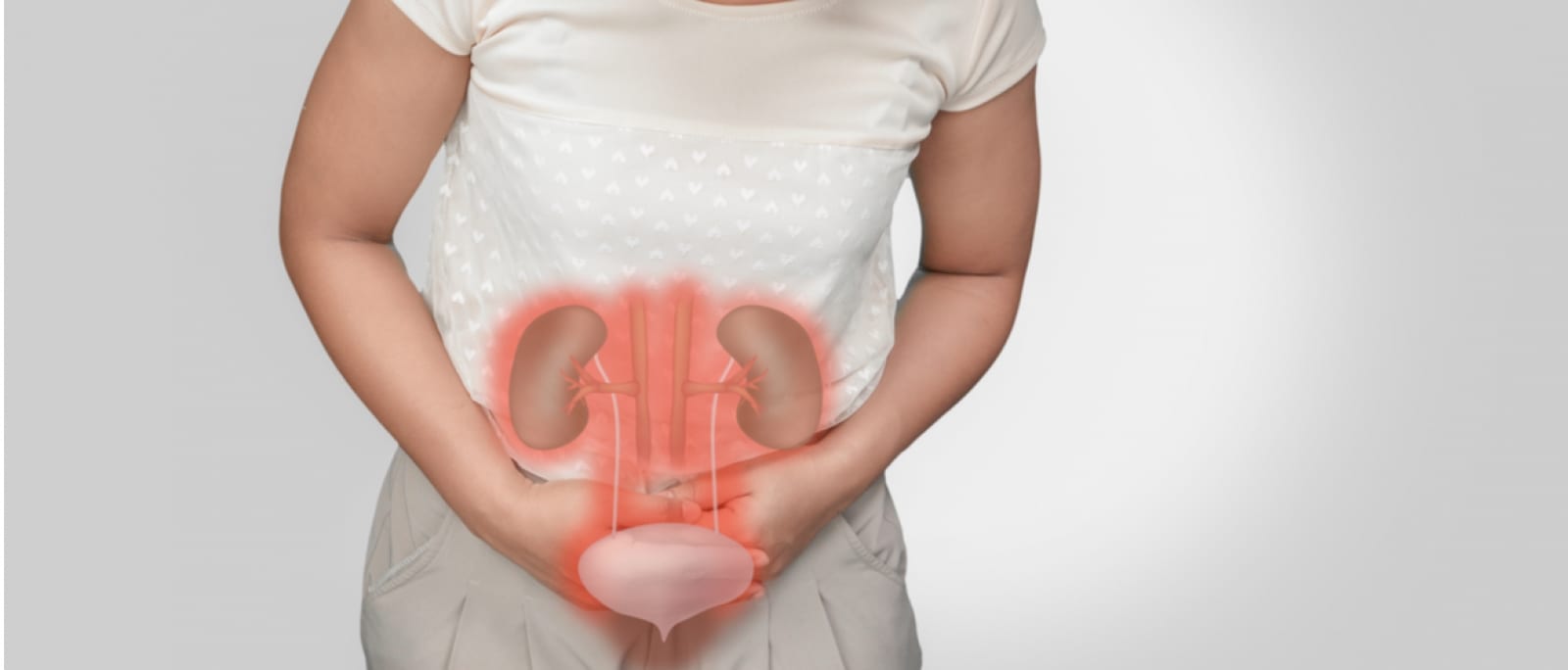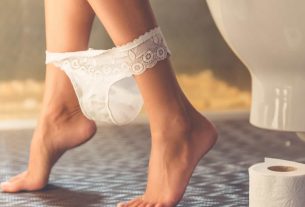Despite the suggestive name, a sagging bladder is a health problem that not only affects the bladder, but also health as a whole.
Also known as cystocele, bladder prolapse or low bladder, a dropped bladder is more common and likely to occur in women over the age of 40 who have already become pregnant. This phenomenon occurs when the muscles and ligaments of the pelvic floor can no longer hold the bladder in its proper place. This way, it “slips” from its normal position and can be easily touched through the vagina.
In fact, along with a fallen bladder, the uterus, urethra and rectum can fall at the same time. And the treatment for this problem is done through lifestyle changes.
Some people need, for example, to lose weight, stop smoking and combat constipation. In addition, physical therapy, pelvic exercises or, in more serious cases, surgery may also be necessary. In this case, when the bladder reaches the entrance to the vagina or passes through the vagina.
Check out everything you need to know about the fallen bladder below. Also learn its symptoms and the best way to treat the problem.
Symptoms of Drooping Bladder
A dropped bladder has several symptoms and the sooner it is diagnosed, the simpler the treatment. Therefore, it is important to pay attention. Are they:
- Protuberance in the vagina, which can be seen with the naked eye or felt with the fingers during vaginal examination;
- Feeling of heaviness in the bladder;
- Feeling of a ball in the vagina;
- Pain or discomfort in the pelvic region;
- Weakness or flaccidity of the muscles and ligaments of the perineum;
- Involuntary loss of urine may occur;
- Difficulty passing urine during the first few seconds of urination;
- Urgency and increased urinary frequency;
- Pain and irritation in the vagina during sexual contact;
- If the rectum also prolapses, a “pocket” may form near the anus, causing pain, discomfort and difficulty eliminating feces.
Origin
Pregnancy is one of the main causes of prolapse. This happens because the weight of the belly increases the pressure in this region of the abdomen. Even vaginal birth can trigger this problem. Especially if there is no adequate obstetric monitoring. Furthermore, the risk of serious injuries to the pelvic floor increases when the baby is too large or not positioned correctly.
However, that’s not all. There are other causes: menopause, for example. According to urologists, the reduction in female hormones causes the tissues in this area to become drier and looser. Furthermore, some neurological diseases such as multiple sclerosis can also affect the pelvic muscles. Other risk factors for this condition are obesity and chronic cough, which increase abdominal pressure.
Diagnosis
In order to diagnose that the person really has a sagging bladder, doctors perform some procedures. First, an assessment of pelvic muscle strength is made. If it is weak, a transvaginal ultrasound is performed: the muscles in the perianal region are checked and whether there are any changes in the uterus, bladder emptying or urethra.
In addition, urodynamic studies are also carried out to assess the bladder’s ability to retain and eliminate urine. An MRI may also be required, which allows for better visualization of the structures of the pelvic region. Another common test is cystourethroscopy. Through this it is possible to see the urethra and bladder. It is usually done in women who have urgency, urinary frequency, bladder pain or blood in the urine.
Treatment
For the most serious cases, the main way to correct the problem is through surgery. The process can be carried out using techniques that restore the position of the vagina and also the structures that have moved. But it can also happen that they simply close the vaginal canal to prevent the organ from leaving the body. Basically, the objective is to restore the anatomy and function of the organs and, thus, alleviate the patient’s symptoms.
But if the case is not so serious – or the person does not want to have surgery – they can use a pessary, which is a rubber ring that holds the uterus in place.
If the diagnosis is still early, it is possible to prevent its worsening through so-called perineal exercises. This way the pelvic floor muscles are strengthened and the woman learns the correct way to contract them. The most common technique is called biofeedback. In it, the patient tightens and relaxes her muscles, meanwhile, records of these movements are viewed on a computer – and electrostimulation, in which shocks stimulate muscle contraction.
Kegel Exercises
Some home exercises are also recommended, both for less worrying cases and to avoid. Below is the step by step.
- Empty the bladder;
- Identify the pubococcygeus muscle: to do this, try to stop the stream of pee while urinating;
- Contract the pubococcygeus muscle again after urinating to make sure you know how to contract the muscle correctly;
- Perform 10 consecutive contractions of the muscle;
- Relax for a few moments;
- Resume exercise, doing at least 10 sets of 10 contractions every day.
Kegel exercises can also be a good option in any position, including with the help of a gym ball. The video below demonstrates in detail the best way to do them.
Physiotherapy for sagging bladder
In addition to the exercises indicated above, there are other options. Follow-up with a physiotherapist may involve the use of a pessary. This is a small device placed inside the vagina and used to hold the bladder. Basically, they are small lead balls that are applied to the vagina throughout the exercises.
Intravaginal electrical stimulation or biofeedback are also common. These are devices that help women to be more aware of their pelvic muscles, so that they can make it easier to perform the exercises correctly.
This treatment in question is carried out in individual sessions, lasting around 30 minutes to 1 hour, which must be consistent at least once a week, although the exercises must be carried out at home every day.
Drooping bladder medicine
Source: Terra
During menopause, some estrogen-based medications can help. They will help control the symptoms of a sagging bladder. On the other hand, hormone replacement during menopause is also indicated to complement treatment in women who are already predisposed to the problem.
Prevention
As previously mentioned, perineal exercises are a great way to prevent it, especially if you are pregnant or planning to become a mother. Another form of prevention is to avoid risk factors. Weight gain, constipation and even chronic cough, for example. Therefore, practicing yoga or pilates is also recommended.
However, the essential thing is that you are very careful, as according to experts, if the exercises are done incorrectly, they are harmful and increase the risk of prolapse.
After all, did you like this article? Then read also: Cystitis – What it is, symptoms, diagnoses and treatments.
Sources: Tua Saúde, Saúde Abril.
Images: Jornal dos Bairros, Terra, WikiHow, GNotícia, Carlos del Roy

Sign up for our newsletter and stay up to date with exclusive news
that can transform your routine!
Warning: Undefined array key "title" in /home/storelat/public_html/wp-content/plugins/link-whisper-premium/templates/frontend/related-posts.php on line 12
Warning: Undefined array key "title_tag" in /home/storelat/public_html/wp-content/plugins/link-whisper-premium/templates/frontend/related-posts.php on line 13




